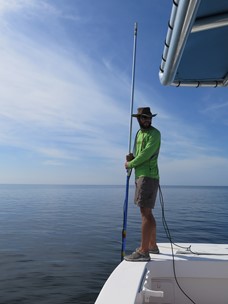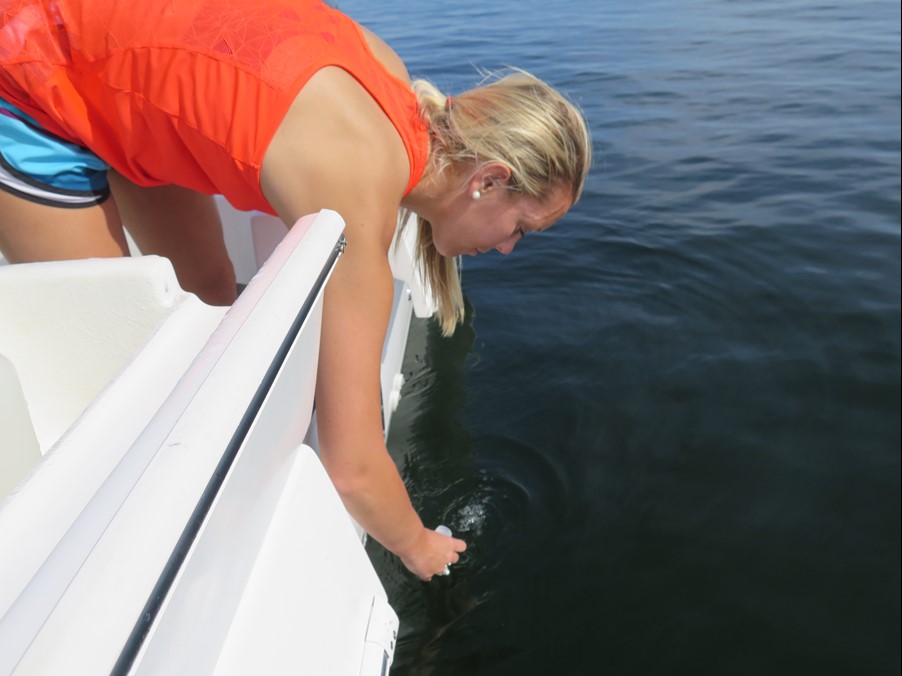
The Florida State University Coastal and Marine Laboratory (FSUCML) has begun an exciting new project in collaboration with the Florida Fish and Wildlife Research Institute, with funding from the National Fish and Wildlife Foundation. The main goal of this project is to assess the status of seagrasses along the west coast of Florida and into Alabama, and to identify reasons why seagrasses are not recovering in some areas; these ‘roadblocks to recovery’ may be caused by human activities, or may be due natural climatic events.
Seagrasses need light to thrive so anything that causes high turbidity (low visibility) can reduce their growth. Turbidity may be caused by heavy rains that wash sediments from the rivers, or flushes nutrients that cause phytoplankton to bloom. These are tiny algal cells than intercept the light before it reaches the seafloor. High winds and storms that stir up sediments can also reduce visibility. Unfortunately people also cause damage to seagrasses either from direct physical damage from boat propellers and anchors, or by stirring up sediment from fishing activities, dredging etc. Fertilizers and pesticides runoff into waterways during rains and can cause damage to seagrasses and other nearshore habitats.

Seagrasses provide many ecosystem services. They are a vital part of marine environments, as they provide food, habitat, and nursery areas for various vertebrate and invertebrate species. Seagrasses also stabilize the ocean bottom with their extensive root systems. Understanding how different events affect the seagrasses in the short and long-term can help us more effectively restore this important ecosystem.
The seagrass project began in May of 2016, and will continue through December of 2016. During this time, FSUCML researchers Dr. Sandra Brooke (FSUCML faculty), Austin Heil (FSUCML graduate student), Abbey Engleman (FSUCML graduate studuent), and Chris Matechik (FSUCML marine technician) will take samples such as water quality and seagrass productivity (removing bits of seagrass including the roots and shoots for later testing at the lab) at various sites including Carrabelle River, Apalachee Bay, Dog Island Reef, and Alligator Point. Stay tuned for future updates on this ongoing project.
Learn more about Dr. Sandra Brooke and her other research projects here.


